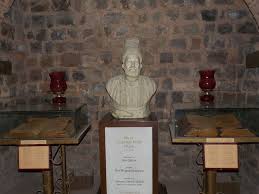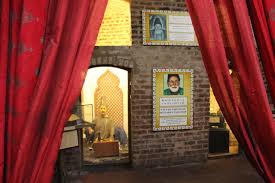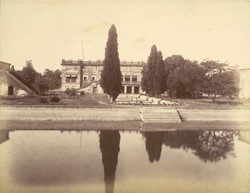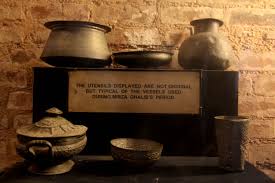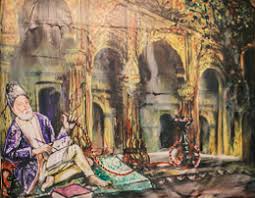Watch: https://www.youtube.com/watch?v=I41BSPPHRKk
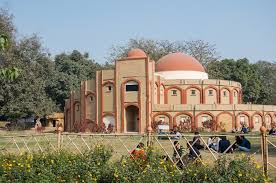
A version of this article was published as an editorial in the Indian Express
http://indianexpress.com/article/opinion/columns/culture-needs-a-plan/
In my article in the Wire (https://thewire.in/culture/adopt-a-heritage-scheme-problems-and-solutions) on the recently launched scheme called Adopt a Heritage by the Government of India as a form of initiating public private partnership there was a mention of the lack of Cultural Management study programs in India.
This article is a short critique on the subject along with solutions.
Earlier last year the Indian Express reported that State Funded Cultural institutions have been asked to generate revenue amounting to 25-30 per cent of their budget initially and “eventually” achieve “self-sufficiency”. The idea will remain utopian unless professional cultural managers are inducted to lead these institutions.
The major anomaly is that neither does India have a cultural policy nor does it have any cultural management academic structures.
The government needs to create a cadre of professional cultural managers which calls for professionals with a host of skills and training. Among which is the requirement to be sensitive and knowledgeable about the wide, diverse and complex cultures and traditions of the Subcontinent. Such persons alone will be able to create business plans for these decadent institutions, provide a vision to connect them to audiences and “markets”, evolve practical strategies to conserve traditional knowledge skills and creative expressions. In the process, only then will these organizations be able to create both self-sustainability and renewed relevance for society, today they are white elephants.
Presently, most of these institutions are led either by artists (performing or visual) who have no idea of or training in administration, policy or management. Or, they are run or controlled by non-specialist bureaucrats. The few professional cultural mangers in the country are not motivated to join or head these institutions since they are unable to provide appropriate remuneration and perks and, most importantly, ensure functional autonomy. The dearth of professional cultural managers is unlikely to be addressed soon since not one eminent management institute in the country offers a programme on cultural management.
Most state-run cultural institutions across India have been unable to chart a meaningful functional role for either creative communities or for the preservation of their cultural traditions. Outreach programs that can make their creativity relevant have also not been created.
Cultural ecosystems are rocked when a cultural skill or knowledge system dies similar to when an animal species is reduced, hence large number of knowledge eco systems related to performing arts, linguistics, and crafts are endangered along with Massive Deskilling And marginalization of large number of Creative Communities.
There Is No Cultural Policy That Offers a Holistic and realistic approach to this complex and contested terrain. Committees to formulate policies are mostly formed with artists and cultural academicians; rarely are cultural management professionals or cultural economists invited to join them. Not surprisingly, these committees are unable evolve strategies that will ensure sustainability and conservation of creative communities, and other manifestations of the repositories of our rich cultural heritage.
In the absence of professional cultural managers, bureaucrats in charge of these institutions take up the task of making India’s great cultural heritage visible on the international cultural map. For example, the Festival of India model has not evolved since its inception in the 1980s. The exhibition model frozen and a major reason remains that many of the traditions presented have not been upgraded, and new thoughts of presentation not addressed. Similarly, Those in power are pressured to cope with international terms and frameworks and find themselves groping to address international cultural administrative jargon and fail to address these conceptual frameworks keeping in mind and ensuring the Indian context and interest.
For instance, there is recently great attention given to ideas of cultural mapping and conservation of intangible heritage both by government and non-government institutions. However, there is a dearth of people who actually understand these complex issues or have any idea on the methodology to collect such a data which will involve large sum of public money, nor are they equipped to develop strategies to use the collected data, such that this exercise ensures sustainability of traditions and tradition bearers and creates welfare impact, poverty aversion and social transformation. Just passing directions to create themselves as sustainable organization will not generate the results, nor will choice of leasing land and infrastructure of these institutes to corporate provide a new functionality to the Cultural institutions.
There are, of course, people committed to the field of cultural management and economics. The question is if the government will induct them as professionals, as they do with scientists, health professionals and economists? The other point to note is that initiatives by organizations such as United State India Education Foundation does offer Fulbright Scholarships on this subject, but the push has to come from within. If the cultural sphere is not addressed in a systematic, detached and professional manner, we risk losing huge capital. Culture is too precious to be left Ram bharose!
Navina Jafa
Vice President of Centre for New Perspective works on Traditional Skills and Sustainable Development, is an academic on Heritage Studies, Tourism and A Kathak Dancer and Dance Scholar.
Follow on Twitter @navinajafa
Website www.navinajafa.com
